
A flame-red mystery bird
September 2nd, 2009
The birding at Mud Lake yesterday morning can only be described as "epic." 41 species, 10 of which were migrant warblers.
( Bird geeks click here )
The most exciting part of the day was also the single most frustrating part of the day. In the swampy woods near the filtration plant, a strange bird briefly appeared in the treetops to the west (at the edge of the swamp). It appeared so briefly, and was so unclassifiable, that it soon became difficult to trust my memories of it. By evening, all I had left that I was sure of was, "it was red. It was red, by god, it was red, and it was a red that wasn't kidding around!" I mean, there aren't many red birds in North America. You'd think that would make it easy!
It was vivid red, and I could have sworn it had wing bars. Problem: there is no such thing as a "vivid red bird with wing bars" in this part of the world. My first thought was White-Winged Crossbill. But Crossbills are dingy, greyish red. This was more like flame red.
I talked to the guide of the large group, and he didn't have any ideas, other than one that had already occurred to me: it was a molting male Scarlet Tanager, whose strange molt-pattern conspired to convince me that I saw wing bars. I also thought of Western Tanager--a tanager with wing bars native to the western states and provinces--but it only has a red head.
When I got home, I checked my full Peterson's: the guide that covers all North America. There was one bird in there that matched what I thought I had seen. It's called a Flame-Colored Tanager. But that's ludicrous. Flame-Colored Tanagers are already highly rare in south Texas and Arizona, where they occasionally wander in from Mexico.
Whatever it was, I figured, there was no way I'd ever be sure, unless someone else got a better look at it and sent in a report. I filed it in my records as a "maybe Scarlet Tanager", reported it to the OFNC as a "looked like a Flame-Colored Tanager, but please don't tell people I said that, I don't want to be a laughingstock," and pouted.
The next morning, I had email from Chris Lewis of the OFNC. This story has a happy ending. It wasn't a rare species I saw, but it was definitely a rare bird!
From: Christina LewisHere's the article.
To: Suzanne Britton
Subject: Re: Mud Lake birding, Sept 1st
Date: Wed, 2 Sep 2009 07:31:51 -0400
Hi Suzanne,
Thanks for the report. I & others also saw lots of warblers (total of 16 species) on the 30th - nice to hear that some of them were still around yesterday.
That weird red bird at Mud Lake is - believe it or not - a BALTIMORE ORIOLE! Several people (including myself) saw it on Sunday and we really scratched our heads over it for a while but after getting good looks at it, especially the bill shape, wing bars and general size & structure of the bird we realized that's what it was. Further investigation revealed that this odd pigmentation has been noted in Baltimore Orioles and other spp. that feed on honeysuckle berries; Cedar Waxwings can develop orange (rather than yellow) tips on their tails due to a chemical called rhodoxanthin which is found in these berries. An interesting article about this phenomenon is presented in ABA Birding 2007 - you can read it online (google "baltimore oriole red plumage" and look for the ABA link). Apparently such a bird seen in Halifax in 2005 was also misidentified as a Flame-coloured Tanager!
Good birding,
Chris
Great Blue Heron
August 31st, 2009
He was perched on a half-fallen tree over the Rideau, looking contemplative.

Green Heron
August 28th, 2009
White-Throated Sparrows are moving through now. A rather early pair of Hooded Mergansers swam by on Mud Lake, and a female Rose-Breasted Grosbeak was on the ridge, along with some migrant warblers. None of these subjects were making themselves particularly photographable, however.
But this one was.

The first Green Heron I've seen all year, fishing at the north shore. I felt sheepish when I mentioned it to a fellow birder and he said, "oh yeah, it's always there in the morning..." I guess this is what happens when I finally get out birding at 6 am instead of 6 pm!
A sunset and a flower
August 26th, 2009


The action at Riverain Park
August 25th, 2009
Riverain Park had its usual late-summer assortment of Ring-Billed Gulls, Canada Geese, Mallards, Black Ducks, Wood Ducks, Rock Pigeons and Cedar Waxwings today. (Waxwings flycatching over the rapids, the rest mostly staying close to shore looking for handouts.) Among them was a pigeon with unusual and rather pretty plumage.
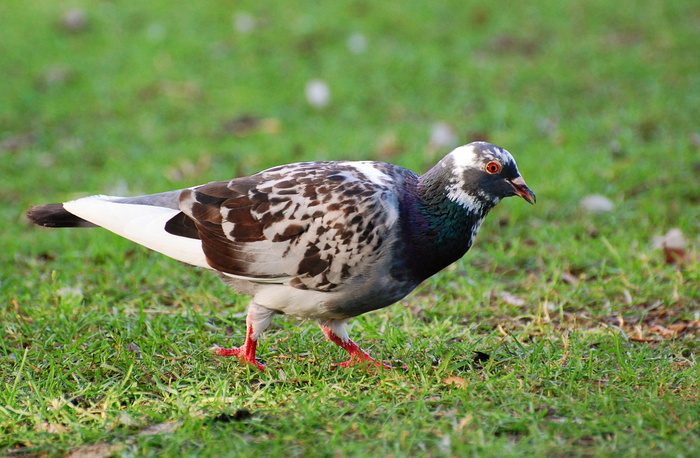
A pair of fledgling Red-Winged Blackbirds had also joined the assemblage. They poked around in every nook and cranny searching for leftover birdseed. The young male was rather handsome with his red epaulets beginning to come in, and his saffron eyebrow stripes.
Like all redwings, he was not timid. When I got a little closer than he cared for, he didn't fly away. He didn't even hop away. He flew at me and hovered about two inches from my face. I took the hint.
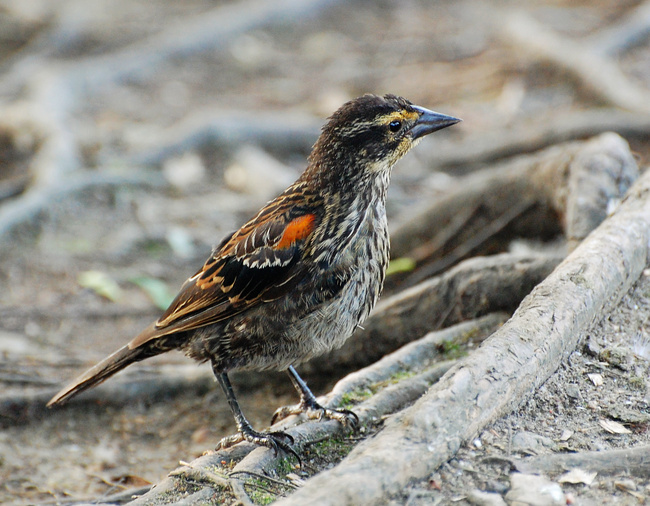
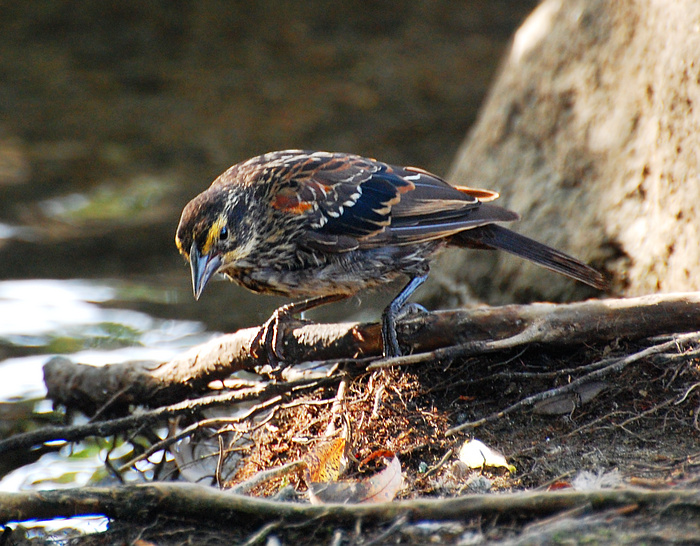
Harvest Sunset
August 22nd, 2009
A view of the Central Experimental Farm at sunset.

1680x1050 wallpaper
Gray Catbird
August 21st, 2009
Gray Catbirds are a common and widespread North American species, a member of the mimid family that also includes mockingbirds and Brown Thrashers. If you walk past a brushy tangle and hear what sounds like a plaintive cat mewing in the foliage, that's probably them.
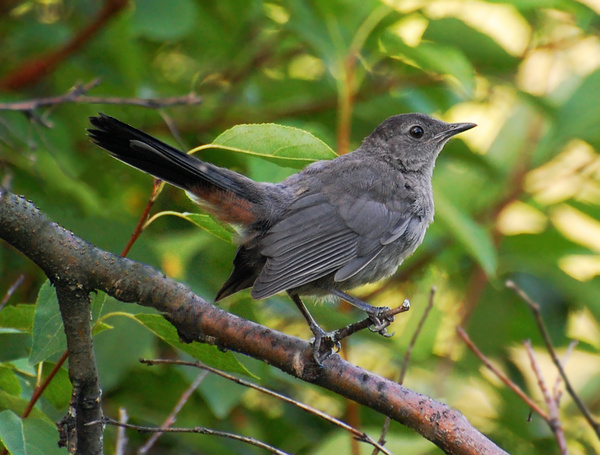
This one was busily pigging out on berries--probably building up reserves for the migration that he'll soon undertake.
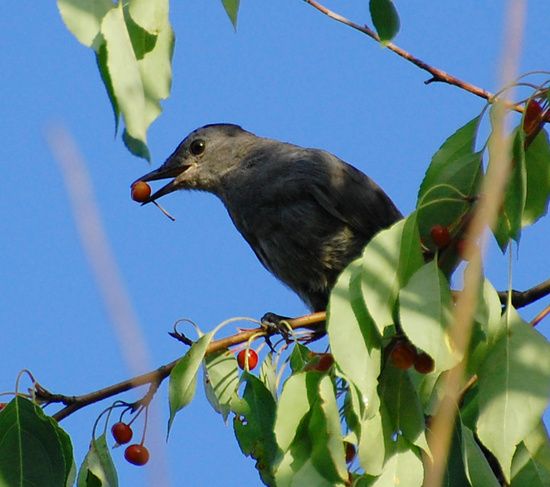
A Moment Of Thought
August 20th, 2009
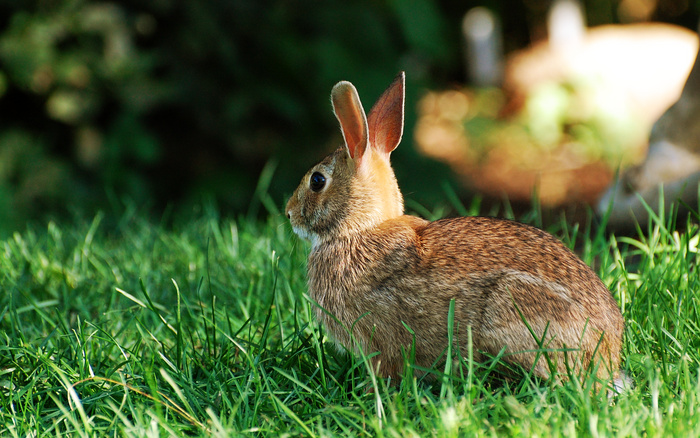
1680x1050 wallpaper
This fellow came along while I was photographing birds and flowers in Fletcher Wildlife Garden's backyard garden. I've found cottontails difficult to capture well in the past, mainly because of the kind of landscape they favor: grass and more grass, or scrubby bushes. In this case, the land dropped off into a wooded ravine maybe ten feet behind him, which gave the picture a nice feel of depth.
Butterfly, bird, blossoms
August 18th, 2009
I think perhaps I'll just sit here in the air conditioning for the next few days and post photos from the backlog. Heat exhaustion is not fun.
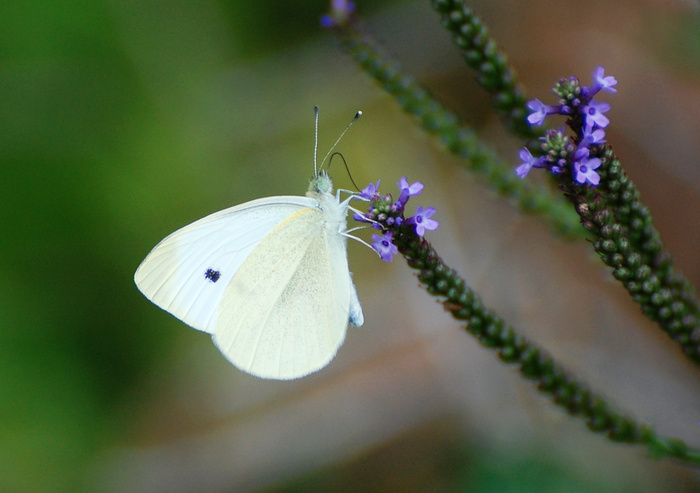
1680x1050 wallpaper
The wildflower, Blue Vervain, is native. The butterfly isn't. It's an accidental European import called a "Cabbage White."
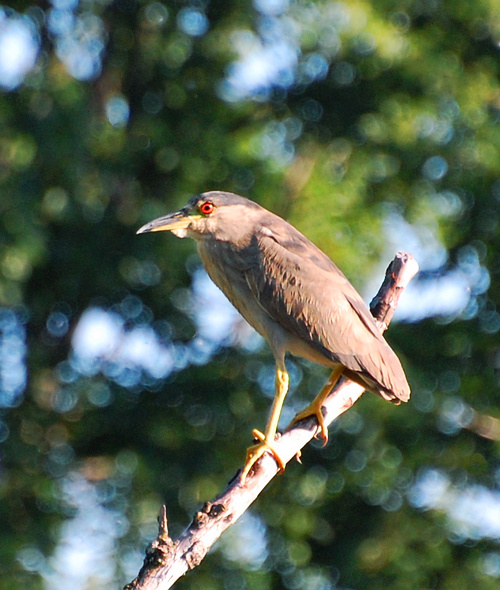
Another young Black-Crowned Night Heron, this time perched over the Deschenes Rapids.
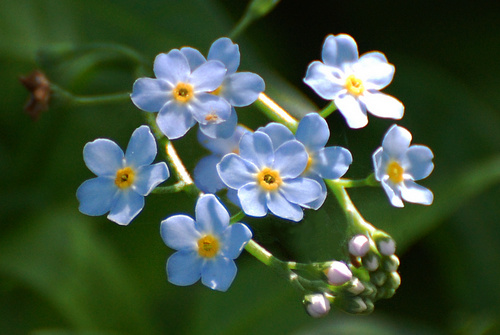
These pretty little forget-me-nots were growing in clusters by the Ottawa River. I really felt the lack of a macro lens here. They were nearly too small for me to properly capture with my usual (zoom) lens, and required a fair bit of digital sharpening.
Kingfisher Pair
August 17th, 2009
This Belted Kingfisher pair made for a nice series of pictures when they flew over Mud Lake this afternoon. I'm still trying to get a decent perched shot of this species, a common breeder at Ottawa's ponds and rivers.
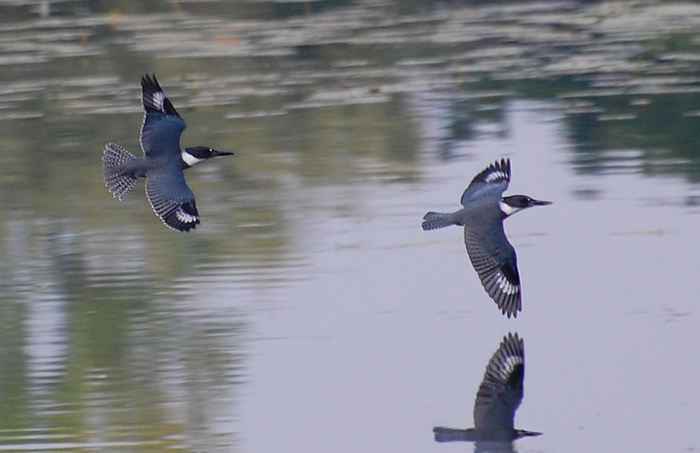
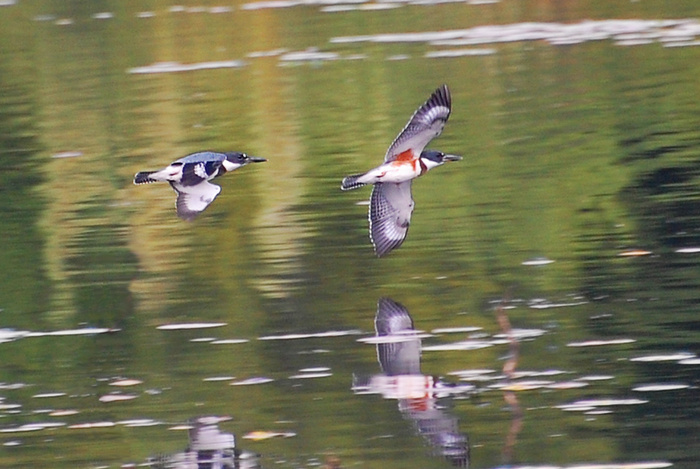
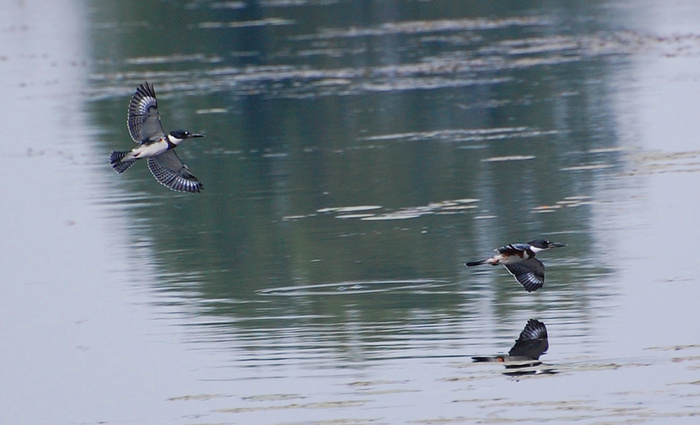
The rusty color visible on the front bird in the second picture marks her as female. This is perhaps a mated pair.
|
